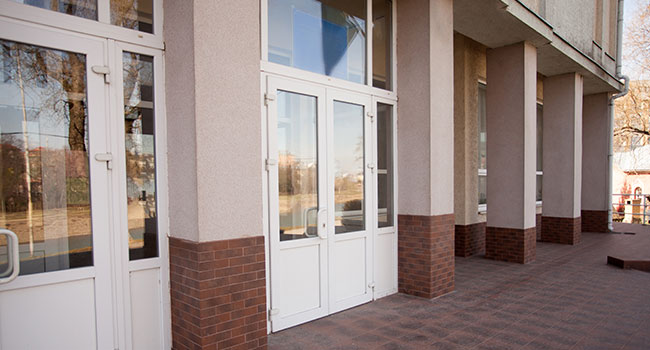
Montana School Secures Campus with Glass Barrier at Front Office
Whitefish Middle School has added a 10-foot glass barrier at its front office as part of its security measures.
- By Jessica Davis
- May 31, 2019
A 10-foot glass barrier was installed at Whitefish Middle School’s front entrance a few months ago as part of its security measures.
According to Principal Josh Branstetter, the new glass barrier is designed to keep visitors and students separated until the visitor has checked in with the school’s front office. After a visitor checks in, a copy of their driver’s license is kept on file in the front office to help faculty know where they are in case of an emergency.
Branstetter said that he’s witnessed a drastic increase in school security awareness within the past five years. According to the FBI, 20 percent of active shootings between 2000 and 2017 involved schools.
“I would say within the last five years it’s really increased, the awareness of school safety. When the building was finished in 2006, we’d have no idea we’d be putting in this extra barrier of security,” Branstetter said.
Branstetter said the barrier was built with students and faculty in mind. The barrier is designed to fit in seamlessly with the front office.
“There is a barrier to it that makes it shatterproof so, if an object were to be thrown at it wouldn’t just shatter to the bottom, it would hold together. It’s not bullet proof, still welcoming and fits the design of what we have inside,” he said.
Columbia Falls Superintendent Steve Bradshaw said Whitefish isn’t the only school working to increase security. Some Columbia Falls campuses are more than 50 years old and have open hallways and many doors and windows, increasing risk in an active shooter scenario.
“We’re looking at ways to section off different parts of our building, that once you get into the building, if we hit a button we’d have doors that could come down and secure the other parts of the building,” Bradshaw said.
When it comes to security, it’s better to be safe than sorry, both men said.
If Columbia Falls’ $34 million bond is passed this fall, the district will look into a similar remodel at other campuses.
About the Author
Jessica Davis is the Associate Content Editor for 1105 Media.